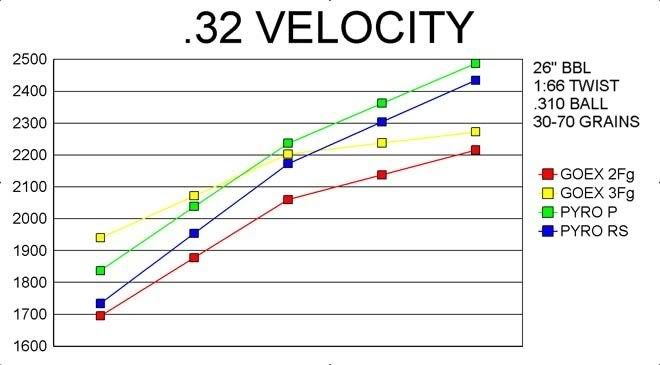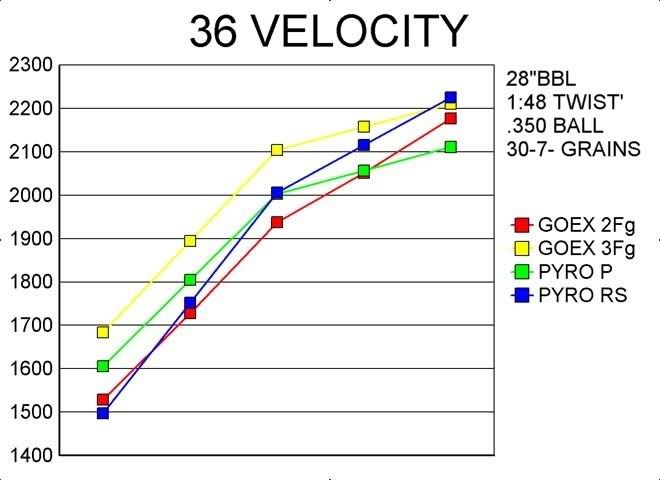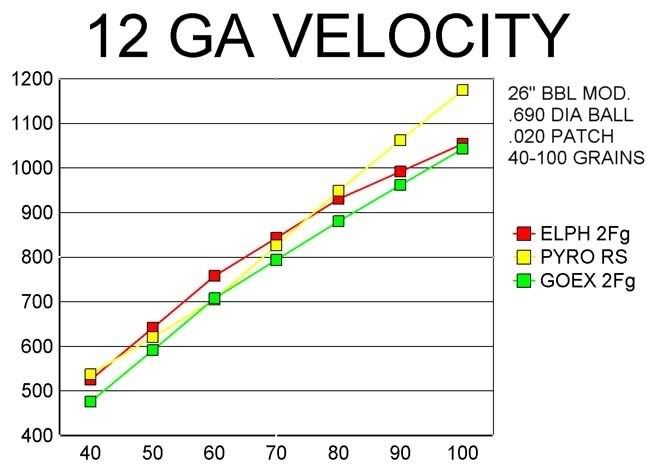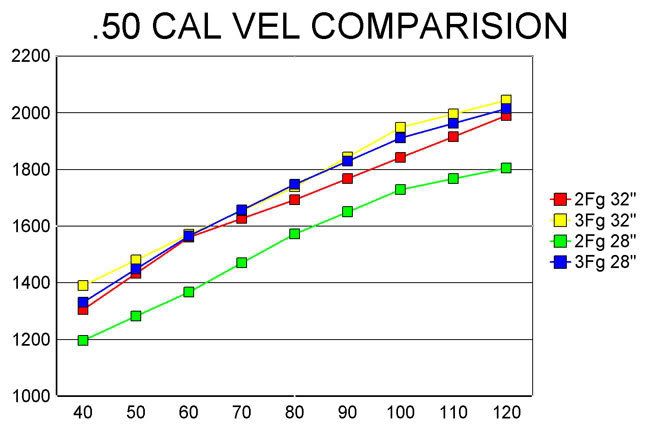From time to time someone asks about powder loads and velocities for their guns.
This usually turns into a great debate about what is a MAXIMUM load and what is a MAXIMUM EFFICIENT load.
What I'm about to present here won't really answer the question about Maximum Efficient loads but I am going to say right up front that our muzzleloaders usually have a MAX LOAD recommended by their manufacturer. DO NOT EXCEED THAT MAXIMUM. DOING SO CAN RESULT IN YOUR DEATH OR WORSE Like being permanently disfigured or blinded for life. .
Now, with that out of the way lets get into what I did.
I went to my 2nd Ed of the "LYMAN BLACK POWDER HANDBOOK & LOADING MANUAL" and used their data to create graphs for the .45, .50, .54 and .58 caliber rifles.
These were all Percussion guns.
The velocities are muzzle velocities.
Depending on the caliber I charted several different powders including Goex, Elephant and Pyrodex. The powders are shown at the right side of the charts.
The barrels specifications are also shown at the right side of the chart.
I have heard about some formulas which give a maximum efficiency value which is determined by the volume of the barrel.
In some of these charts I see indications that there is a breaking off point where the chart changes direction indicating that the efficiency has decreased above some load size but this seems to be related to the type of powder used as well the bore volume. Some powders don't seem to be "volume" sensitive.
Please keep the discussions on a gentlemanly level.
The first chart is for the .45 caliber rifle with a Percussion barrel 28 inches long shooting a .440 diameter roundball. Twist is 1:48 and the powder charges range from 40 to 120 grains.
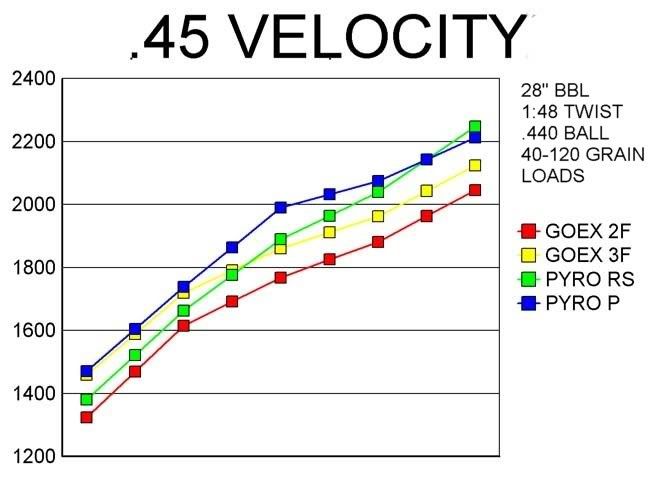
The second chart is for the .50 caliber rifle with a Percussion barrel 32 inches long shooting a .490 diameter roundball. Twist is 1:60 and the powder charges range from 40 to 120 grains.
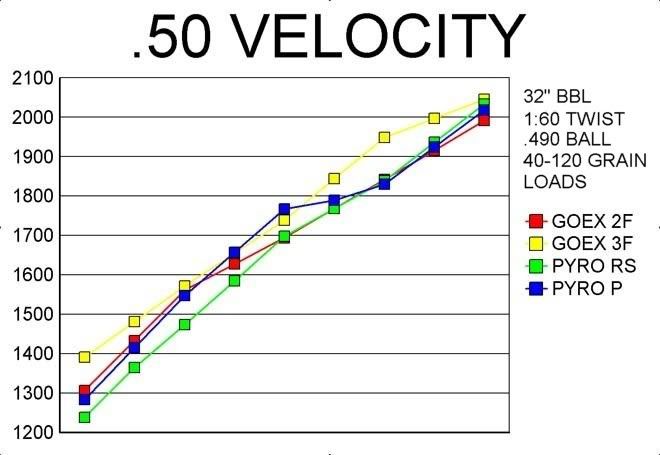
The third chart is for the .54 caliber rifle with a Percussion barrel 28 inches long shooting a .535 diameter roundball. Twist is 1:48 and the powder charges range from 40 to 120 grains.
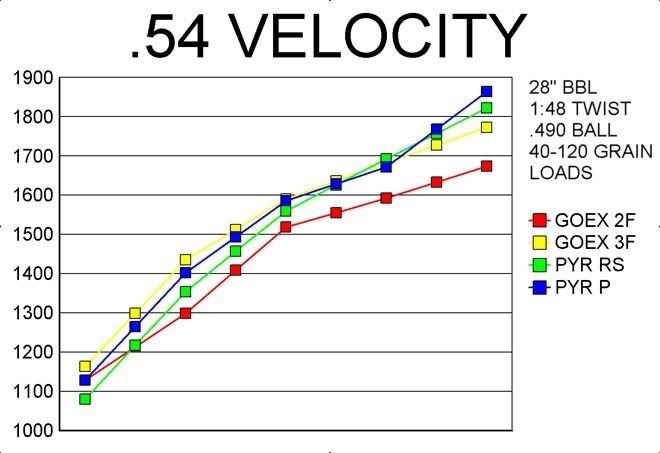
The fourth chart is for the .58 caliber rifle with a Musket capped 32 inch barrel shooting a .570 diameter roundball. Twist is 1:48 and the powder charges range from 60 to 140 grains.
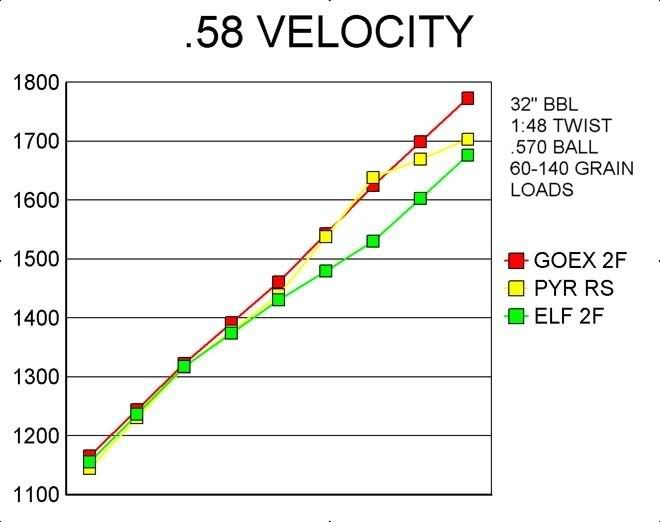
This usually turns into a great debate about what is a MAXIMUM load and what is a MAXIMUM EFFICIENT load.
What I'm about to present here won't really answer the question about Maximum Efficient loads but I am going to say right up front that our muzzleloaders usually have a MAX LOAD recommended by their manufacturer. DO NOT EXCEED THAT MAXIMUM. DOING SO CAN RESULT IN YOUR DEATH OR WORSE Like being permanently disfigured or blinded for life. .
Now, with that out of the way lets get into what I did.
I went to my 2nd Ed of the "LYMAN BLACK POWDER HANDBOOK & LOADING MANUAL" and used their data to create graphs for the .45, .50, .54 and .58 caliber rifles.
These were all Percussion guns.
The velocities are muzzle velocities.
Depending on the caliber I charted several different powders including Goex, Elephant and Pyrodex. The powders are shown at the right side of the charts.
The barrels specifications are also shown at the right side of the chart.
I have heard about some formulas which give a maximum efficiency value which is determined by the volume of the barrel.
In some of these charts I see indications that there is a breaking off point where the chart changes direction indicating that the efficiency has decreased above some load size but this seems to be related to the type of powder used as well the bore volume. Some powders don't seem to be "volume" sensitive.
Please keep the discussions on a gentlemanly level.
The first chart is for the .45 caliber rifle with a Percussion barrel 28 inches long shooting a .440 diameter roundball. Twist is 1:48 and the powder charges range from 40 to 120 grains.

The second chart is for the .50 caliber rifle with a Percussion barrel 32 inches long shooting a .490 diameter roundball. Twist is 1:60 and the powder charges range from 40 to 120 grains.

The third chart is for the .54 caliber rifle with a Percussion barrel 28 inches long shooting a .535 diameter roundball. Twist is 1:48 and the powder charges range from 40 to 120 grains.

The fourth chart is for the .58 caliber rifle with a Musket capped 32 inch barrel shooting a .570 diameter roundball. Twist is 1:48 and the powder charges range from 60 to 140 grains.






